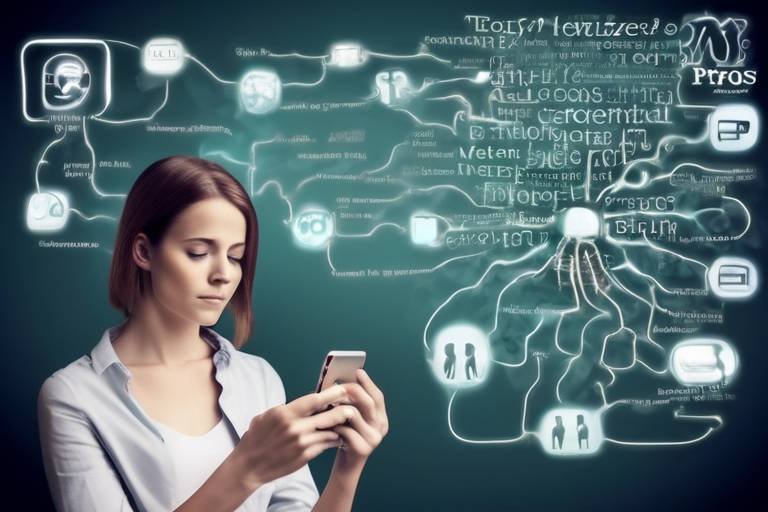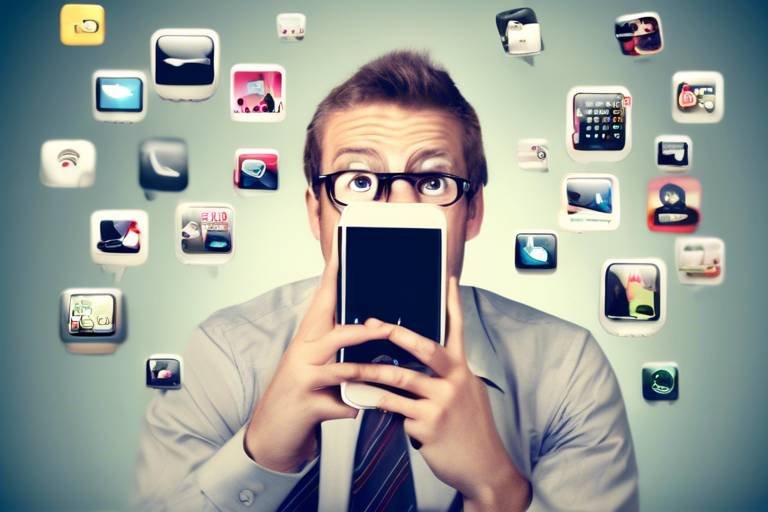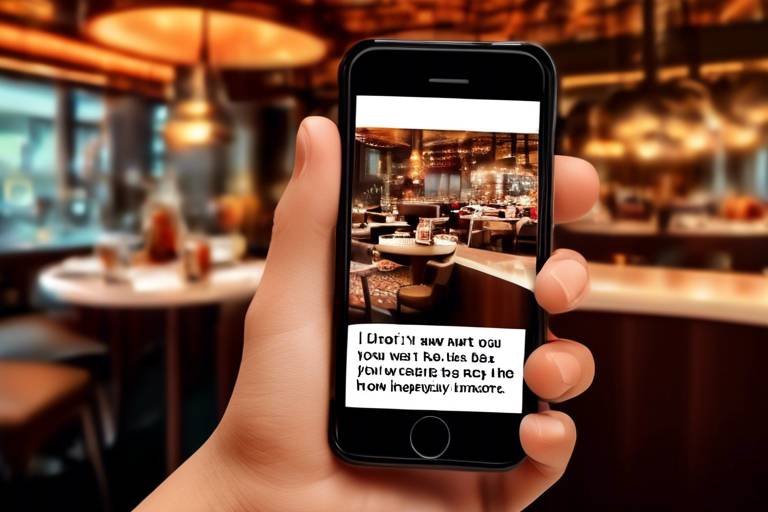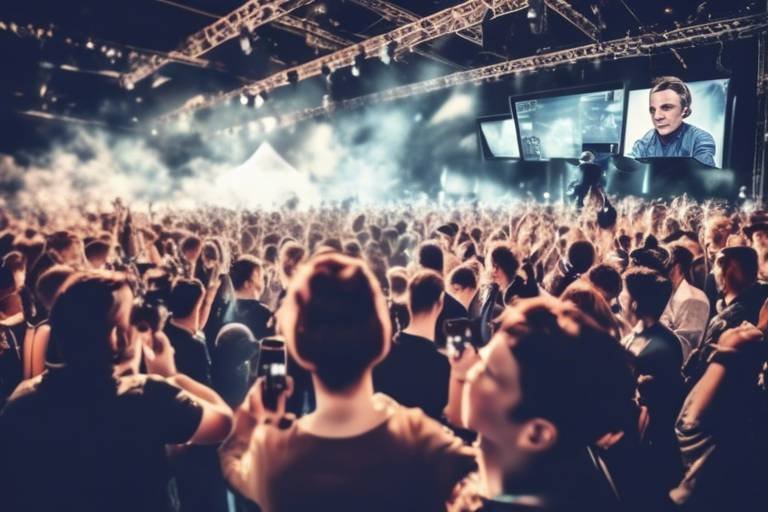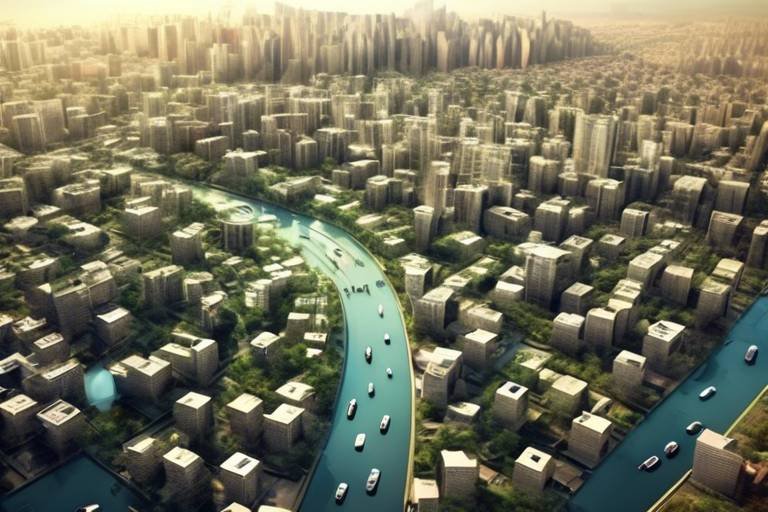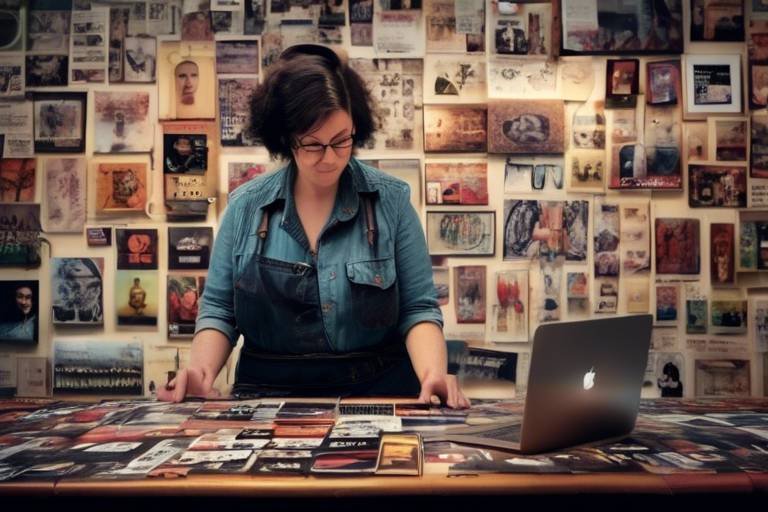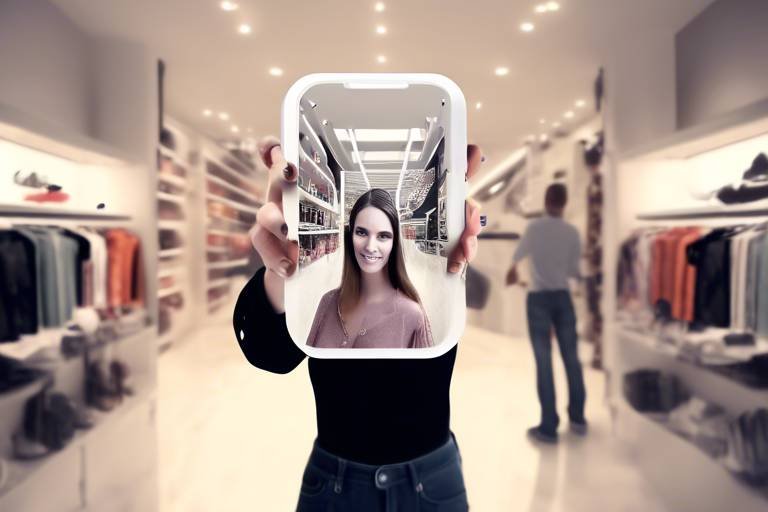The Role of Digital Art in Contemporary Society
In today’s fast-paced world, digital art has emerged as a powerful medium that transcends traditional boundaries, shaping the way we perceive and interact with art. As technology continues to evolve, so does the landscape of creativity, offering artists new platforms to express themselves and connect with audiences. This article delves into the significance of digital art in contemporary society, exploring its impact on culture, technology, and the art community. It also highlights how digital art serves as a tool for self-expression and a catalyst for social change.
The rise of digital art has been nothing short of revolutionary. Imagine a world where artists can create stunning visuals without the need for physical canvases or traditional paint. Instead, they wield powerful software and tools that allow them to manipulate pixels and shapes in ways that were once unimaginable. This shift not only democratizes art creation but also invites a broader audience to engage with and appreciate art in various forms. Whether it's through a mesmerizing digital painting or an interactive installation, digital art captivates the senses and challenges our understanding of what art can be.
One of the most compelling aspects of digital art is its ability to foster community and collaboration. With the internet at our fingertips, artists from all corners of the globe can share their work, exchange ideas, and even collaborate on projects in real-time. This interconnectedness leads to a vibrant ecosystem where creativity flourishes, and diverse voices are heard. In a world often divided by geography and culture, digital art acts as a unifying force, bringing people together through shared experiences and artistic expression.
Furthermore, digital art plays a crucial role in social change. Artists are using their platforms to address pressing societal issues, raise awareness, and inspire action. For instance, digital campaigns that highlight climate change or social justice movements have the power to reach millions, igniting conversations and prompting individuals to reflect on their values and beliefs. In this way, digital art not only entertains but also educates and empowers, making it an essential component of contemporary discourse.
As we look to the future, the role of digital art in society will only continue to expand. With emerging technologies like artificial intelligence and virtual reality, artists are poised to explore uncharted territories, pushing the boundaries of creativity even further. The integration of digital art into mainstream culture is inevitable, as it becomes increasingly recognized for its value and significance. As we embrace this new era of artistic expression, one thing is clear: digital art is not just a fleeting trend; it is a vital part of our cultural fabric.
- What is digital art? Digital art refers to artistic work created using digital technology, including graphics, animations, and interactive installations.
- How has technology influenced digital art? Technology has provided artists with innovative tools and platforms, allowing for new forms of creativity and expression.
- Can digital art promote social change? Yes, many artists use digital art to address social issues and inspire action through their work.
- What are some popular tools for digital artists? Some popular tools include Adobe Photoshop, Illustrator, Blender, and Maya, each offering unique features for creativity.
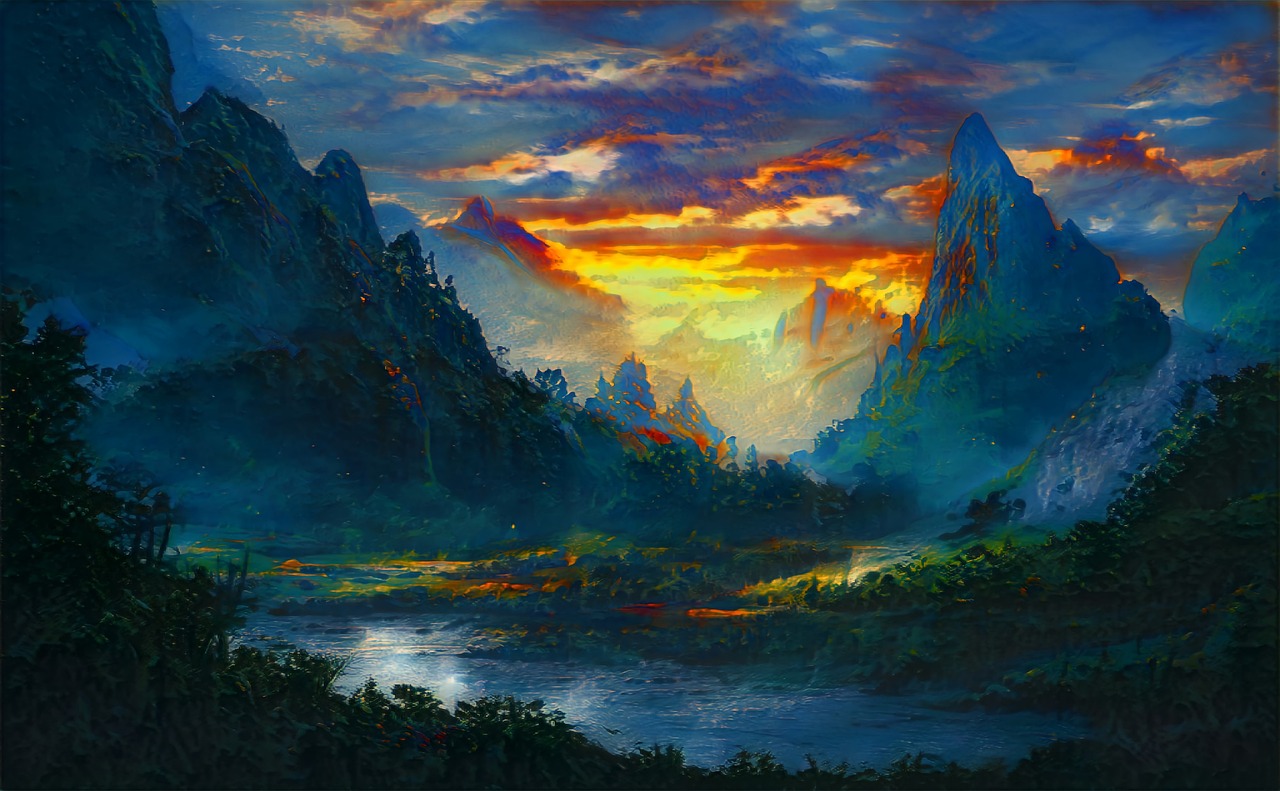
The Evolution of Digital Art
The journey of digital art is nothing short of fascinating, marked by rapid technological advancements and creative experimentation. It all began in the 1960s when artists started to explore the potential of computers as a medium for artistic expression. Early pioneers like Frieder Nake and Harold Cohen used algorithms to create mesmerizing pieces that challenged traditional notions of art. Can you imagine a time when computers were just beginning to emerge, and artists were already envisioning their potential in art? It’s like witnessing the birth of a new language!
As we moved into the 1980s and 1990s, the introduction of personal computers and graphic software revolutionized the way artists worked. Programs like Adobe Photoshop and CorelDRAW became the new canvases, allowing artists to manipulate images with unprecedented precision. This era marked a significant shift, as artists began to embrace technology not just as a tool but as an integral part of their creative process. The digital canvas was no longer a mere extension of traditional art; it became a vibrant space for innovation and expression.
Fast forward to the 2000s, and we saw the rise of the internet, which played a crucial role in the evolution of digital art. Artists could now share their work with a global audience, breaking down geographical barriers. Online platforms and communities flourished, allowing artists to connect, collaborate, and showcase their creations. The digital art scene began to thrive, with genres like digital painting, 3D modeling, and pixel art gaining traction. It was as if a digital renaissance was unfolding before our eyes!
Today, digital art encompasses a wide array of styles and techniques, from interactive installations to virtual reality experiences. The emergence of new technologies, such as artificial intelligence and augmented reality, has opened up even more exciting possibilities for artists. These advancements allow for a more immersive and engaging experience, where the boundaries between the viewer and the artwork blur. Just think about how far we've come—what once required physical materials can now be created and experienced entirely in the digital realm.
To summarize the evolution of digital art, we can look at the following key milestones:
| Era | Key Developments |
|---|---|
| 1960s | Early experiments with computer-generated art |
| 1980s-1990s | Rise of personal computers and graphic software |
| 2000s | Internet allows global sharing and collaboration |
| 2010s-Present | Integration of AI, VR, and AR in art creation |
In conclusion, the evolution of digital art is a testament to the power of innovation and creativity. It reflects our changing relationship with technology and how it shapes our understanding of art. As we look to the future, one can only wonder what new forms of expression will emerge as artists continue to push the boundaries of what is possible in the digital realm.
- What is digital art? Digital art refers to any artwork created or presented using digital technology, encompassing a wide range of styles and techniques.
- How has technology influenced digital art? Technology has introduced new tools and platforms for artists, enabling them to create, share, and collaborate in ways that were previously unimaginable.
- What are some popular software tools for digital artists? Common tools include Adobe Photoshop, Illustrator, Blender, and Maya, each offering unique features for different aspects of digital art creation.
- What trends are currently shaping the digital art landscape? Trends like NFTs, interactive installations, and augmented reality are gaining popularity, influencing how art is created, shared, and valued.
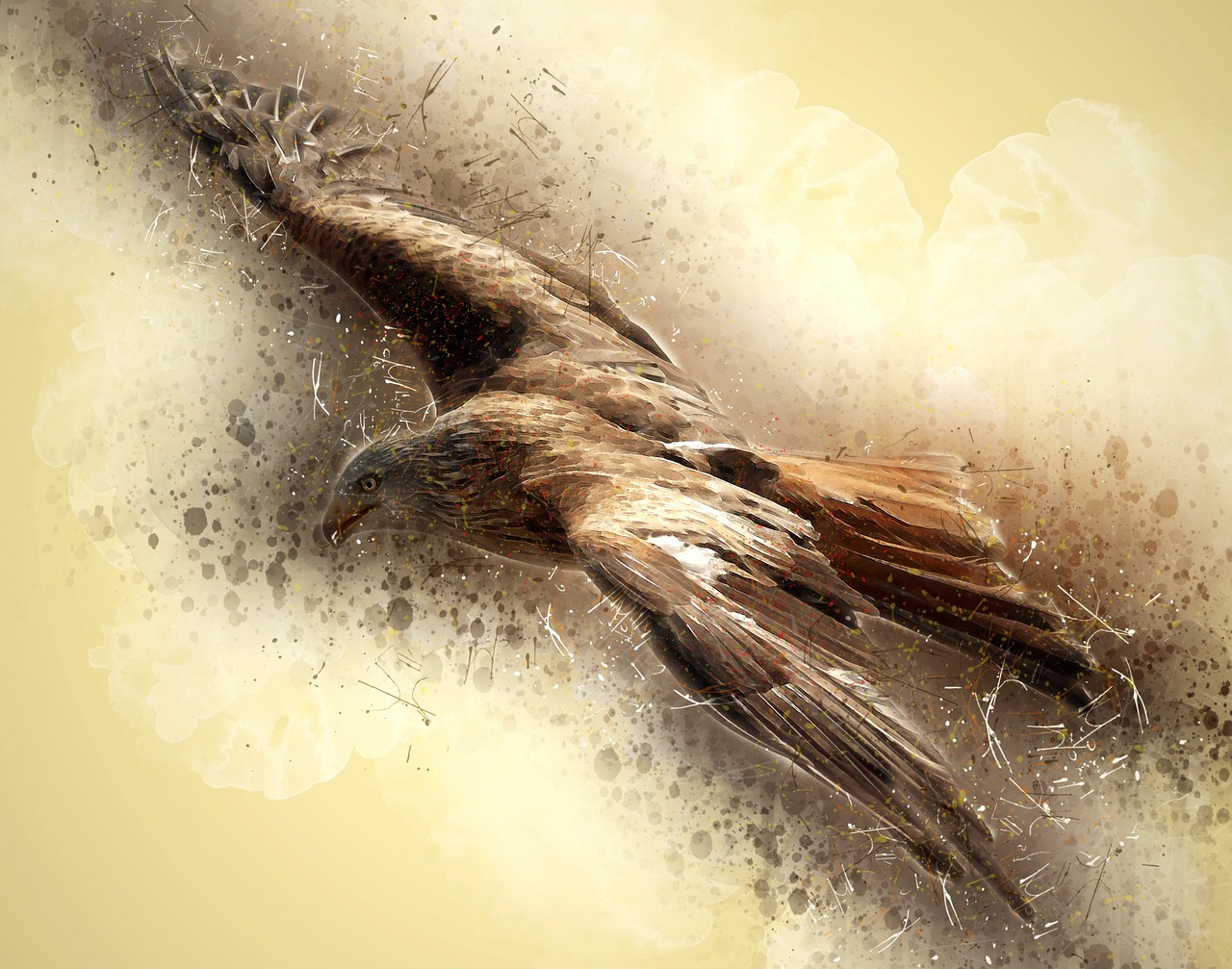
The Impact of Technology on Art Creation
In today's fast-paced world, technology is not just a tool; it's a catalyst for creativity. The realm of art has been profoundly transformed by emerging technologies, allowing artists to push boundaries and explore new mediums like never before. Imagine a painter who can create a masterpiece not just on canvas but in a virtual space, where colors can shift and change with a mere flick of the wrist. This is the exciting reality we live in, where the fusion of technology and art has become a playground for innovation.
One of the most significant advancements in art creation has been the introduction of virtual reality (VR). Artists can now immerse themselves in a three-dimensional environment, crafting their works in a space that feels almost tangible. With tools like Oculus Medium, creators can sculpt, paint, and design in a virtual realm, giving them the freedom to explore their imagination without the constraints of physical materials. This level of interactivity not only enhances the creative process but also invites audiences to engage with art in ways that were previously unimaginable.
Another transformative force is artificial intelligence (AI). AI algorithms can analyze vast amounts of data and generate unique artworks that challenge our understanding of creativity. For instance, programs like DeepArt and Artbreeder allow users to create stunning visuals by blending styles and elements from various sources. This raises questions about authorship and originality, but it also opens up a world of possibilities. Artists can collaborate with AI to produce works that reflect a fusion of human emotion and machine precision, creating a new genre of art altogether.
As we delve deeper into the digital landscape, it's essential to recognize the various software and tools that empower artists in their creative journeys. Below is a table showcasing some of the most popular tools used by digital artists:
| Software/Tool | Type | Key Features |
|---|---|---|
| Adobe Photoshop | Graphic Design | Layering, Brushes, Filters |
| Blender | 3D Modeling | Animation, Sculpting, Rendering |
| Procreate | Digital Painting | Touch Interface, Brushes, Animation Assist |
| Unity | Game Development | Real-time Rendering, VR Support |
These tools not only enhance the creative process but also democratize art creation. With user-friendly interfaces and extensive online tutorials, aspiring artists can dive into the world of digital art without the steep learning curve that traditional mediums often require. This accessibility has led to an explosion of creativity, with diverse voices and styles emerging from every corner of the globe.
Furthermore, the impact of technology on art creation extends beyond individual expression. It has fostered a sense of community among artists. Online platforms allow creators to share their work, receive feedback, and collaborate on projects, building a vibrant ecosystem of innovation. Social media channels, such as Instagram and TikTok, have become essential tools for artists to showcase their creations, connect with audiences, and even sell their work, thus reshaping the traditional art market.
In conclusion, the impact of technology on art creation is profound and multifaceted. It has transformed the way artists conceptualize, create, and share their work. As we continue to embrace these technological advancements, we can only imagine the new forms of expression that will emerge, inviting us all to experience art in ways we never thought possible.
- How has technology changed the way artists create?
Technology has introduced new tools and mediums, allowing artists to explore innovative forms of expression, such as virtual reality and artificial intelligence. - What are some popular software tools for digital artists?
Some popular tools include Adobe Photoshop for graphic design, Blender for 3D modeling, and Procreate for digital painting. - Can AI create art?
Yes, AI can generate unique artworks, prompting discussions about creativity and authorship in the art world. - How does social media benefit artists?
Social media allows artists to reach wider audiences, engage with fans, and promote their work effectively.
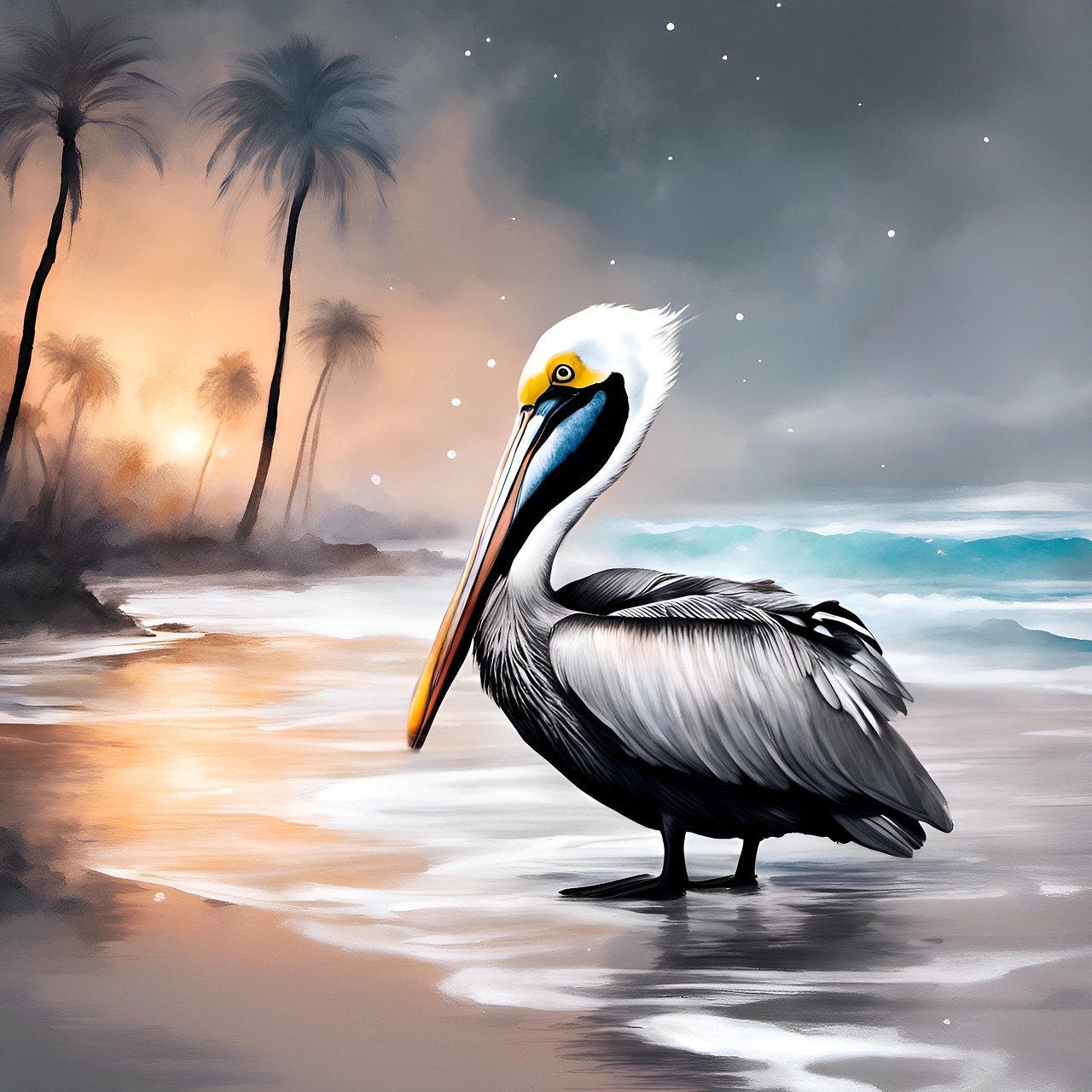
Software and Tools for Digital Artists
In the vibrant world of digital art, the tools and software available play a pivotal role in shaping the creative process. These resources not only enable artists to express their visions but also push the boundaries of what can be achieved in the digital realm. With a plethora of options available, artists can select tools that best suit their style and workflow. Whether you are a seasoned professional or just starting out, understanding the right software can significantly enhance your artistic journey.
One of the most widely recognized and utilized programs in the digital art community is Adobe Photoshop. Known for its versatility, Photoshop offers a comprehensive suite of features that allow artists to create stunning visuals from scratch or manipulate existing images. From its powerful brush engine to advanced layering techniques, Photoshop serves as a digital canvas that caters to both illustrators and photographers alike. Additionally, the ability to use plugins expands its functionality, making it a go-to choice for many creatives.
Another key player in the digital art scene is Adobe Illustrator. Unlike Photoshop, which is primarily raster-based, Illustrator is a vector graphics editor. This distinction is crucial for artists who wish to create clean, scalable artwork that maintains its quality regardless of size. Whether designing logos, icons, or intricate illustrations, Illustrator provides the precision and flexibility necessary to bring ideas to life. The integration between Photoshop and Illustrator also allows for a seamless workflow, enabling artists to switch between the two programs effortlessly.
For those venturing into the 3D realm, programs like Blender and Maya have become essential tools for artists looking to create immersive experiences. Blender, being open-source, has garnered a large community of users who contribute to its development and share resources. Its robust modeling, sculpting, and animation features allow artists to push their creativity to new heights. On the other hand, Maya is renowned for its advanced animation capabilities, making it a favorite among professionals in the film and gaming industries. Both platforms offer unique strengths, and artists often choose based on the specific needs of their projects.
To summarize, the right software can make a world of difference in the digital art landscape. Artists should consider their individual needs, whether they focus on illustration, graphic design, or 3D modeling, to select the tools that will best support their creative endeavors. Below is a table that highlights some of the most popular software options along with their primary features:
| Software | Type | Key Features |
|---|---|---|
| Adobe Photoshop | Raster Graphics Editor | Advanced brushes, layering, photo editing, plugins |
| Adobe Illustrator | Vector Graphics Editor | Precision drawing, scalability, typography tools |
| Blender | 3D Modeling & Animation | Open-source, sculpting, rendering, animation |
| Maya | 3D Animation Software | Advanced animation tools, simulation, rendering |
As technology continues to evolve, digital artists are constantly discovering new tools and software that enhance their creative process. The beauty of digital art lies in its accessibility and the ability to experiment with various mediums without the constraints of traditional methods. By embracing these tools, artists can unlock their full potential, turning their imaginative ideas into reality, one pixel at a time.
Q: What is the best software for beginners in digital art?
A: For beginners, software like Procreate for iPad or Clip Studio Paint offers user-friendly interfaces and a range of features that make it easy to start creating digital art.
Q: Can I use free software for digital art?
A: Absolutely! Programs like Krita and GIMP are excellent free alternatives that provide powerful tools for artists without the financial commitment.
Q: How important are hardware specifications for digital art?
A: While software is crucial, having a good computer and a quality graphics tablet can significantly enhance your experience and performance, especially when working with complex projects.
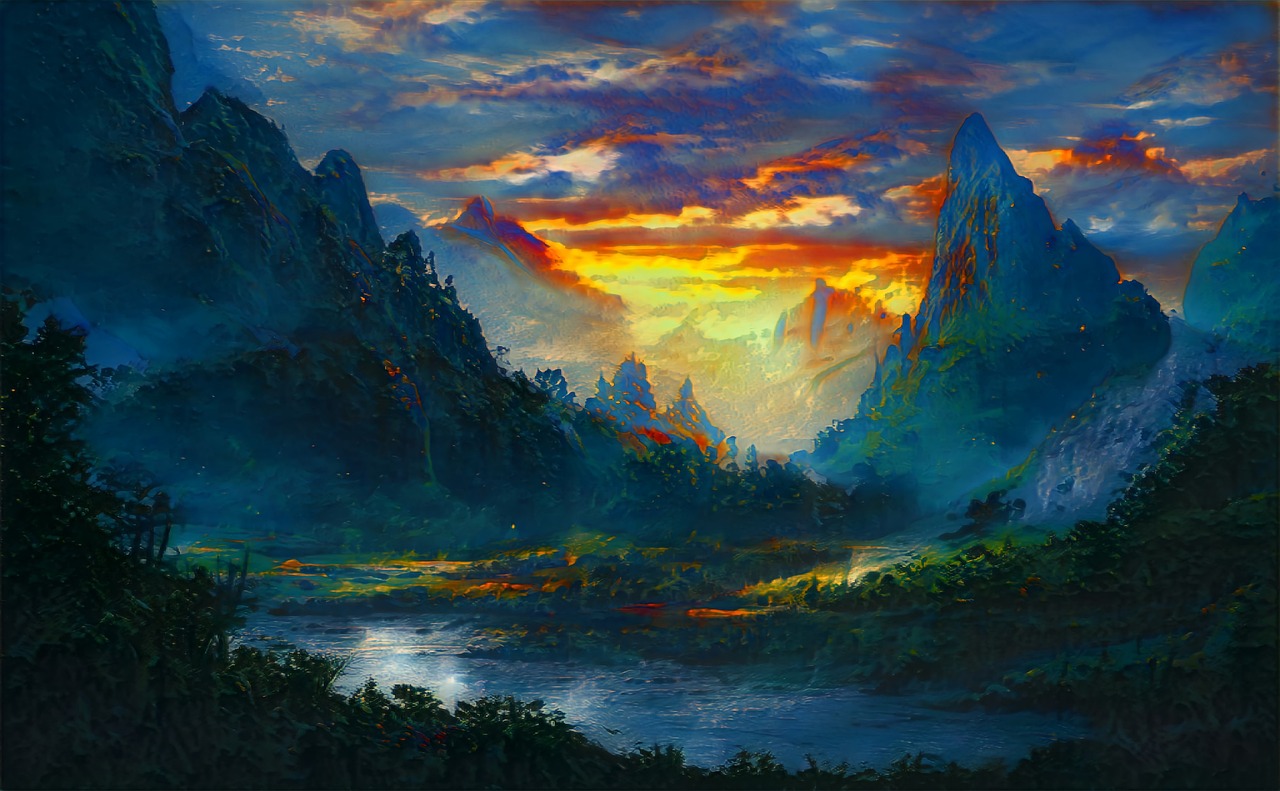
Graphic Design Software
Graphic design software plays a pivotal role in the realm of digital art, serving as the backbone for artists and designers alike. With the evolution of technology, these tools have become increasingly sophisticated, allowing creators to bring their visions to life with unparalleled precision and creativity. Whether you are a seasoned professional or an aspiring artist, understanding the capabilities of graphic design software can significantly enhance your artistic journey.
One of the most widely recognized tools in the industry is Adobe Photoshop. This powerhouse software is renowned for its extensive features that enable users to manipulate images, create stunning graphics, and edit photographs with ease. From layering techniques to advanced color correction, Photoshop provides a robust platform for artists to explore their creativity. Another essential tool is Adobe Illustrator, which focuses on vector graphics. This software is perfect for creating logos, illustrations, and any artwork that requires scalability without loss of quality. The ability to work with paths and shapes makes Illustrator a favorite among graphic designers.
But it's not just Adobe that has made waves in the graphic design software arena. There are also numerous alternatives that cater to different needs and budgets. For instance, CorelDRAW is a popular choice for those who prefer a more intuitive interface. Similarly, Affinity Designer has gained traction for its one-time purchase model, which is appealing to freelancers and hobbyists. These tools often come with unique features that can streamline the design process, allowing artists to focus more on creativity rather than technicalities.
To give you a clearer picture, here’s a comparison table of some popular graphic design software:
| Software | Type | Key Features | Price Model |
|---|---|---|---|
| Adobe Photoshop | Raster Graphics | Image editing, retouching, digital painting | Subscription |
| Adobe Illustrator | Vector Graphics | Logo design, illustrations, typography | Subscription |
| CorelDRAW | Vector Graphics | Layout design, typography, image editing | One-time purchase |
| Affinity Designer | Vector Graphics | Artboards, vector and raster workspaces | One-time purchase |
In addition to these established programs, the rise of cloud-based graphic design tools has transformed how artists collaborate and share their work. Platforms like Canva and Figma allow multiple users to work on a design simultaneously, making it easier to gather feedback and make adjustments in real-time. This collaborative aspect is particularly beneficial for teams working on branding projects or social media campaigns, where quick iterations are crucial.
Ultimately, the choice of graphic design software will depend on your specific needs, preferences, and budget. Whether you are looking for advanced capabilities or user-friendly interfaces, the right software can empower your creativity and help you express your artistic vision. As you delve into the world of digital art, experimenting with different tools can lead to exciting discoveries and innovative techniques that can elevate your work to new heights.
- What is the best software for beginners in graphic design?
For beginners, tools like Canva or Affinity Designer are user-friendly and offer a great starting point without overwhelming complexity.
- Do I need to know how to draw to use graphic design software?
No, while drawing skills can be beneficial, many graphic design software programs offer features that allow you to create stunning designs without traditional drawing skills.
- Can I use graphic design software on a tablet?
Yes! Many graphic design applications, such as Procreate for iPad, are optimized for tablet use, providing a seamless drawing experience.
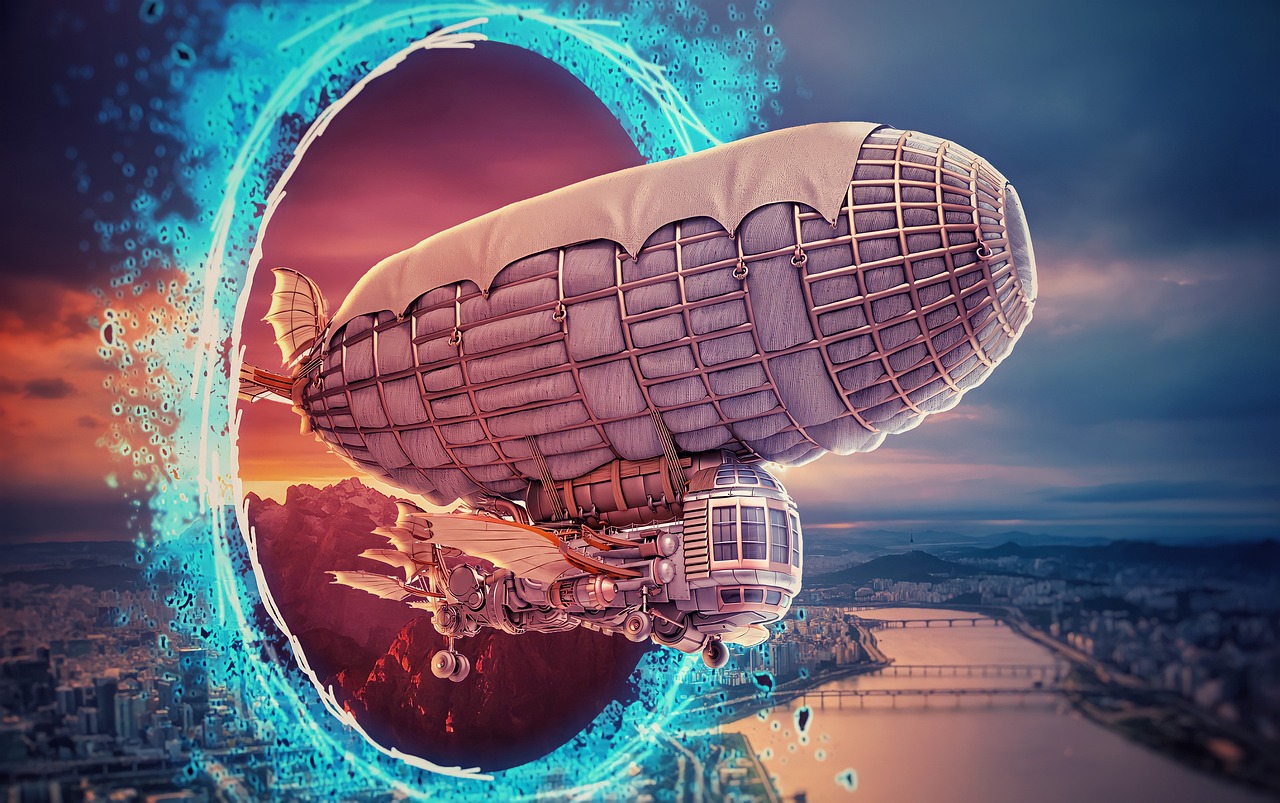
3D Modeling and Animation Tools
In the vibrant and ever-evolving world of digital art, play a pivotal role in pushing the creative boundaries of artists. These tools are not just software; they are gateways to creating immersive experiences that can transport audiences into entirely new realms. With the rise of technology, artists now have the ability to create stunning visual narratives that were once only the stuff of dreams. Imagine being able to sculpt a character or a landscape in a virtual space, where every detail can be manipulated with precision. This is the magic of 3D modeling.
Among the most popular tools in this domain are Blender and Maya. Blender is an open-source powerhouse that has gained immense popularity due to its robust features and versatility. It allows artists to perform a myriad of tasks such as modeling, texturing, and animating—all within a single platform. The best part? It's free! This accessibility empowers budding artists to experiment without the financial burden. On the other hand, Maya, developed by Autodesk, is the industry standard for 3D animation and modeling. It's renowned for its sophisticated capabilities, making it a favorite among professional studios. Both tools offer unique advantages, and choosing one often depends on the artist's specific needs and goals.
Here’s a quick comparison of these two giants in the 3D modeling world:
| Feature | Blender | Maya |
|---|---|---|
| Cost | Free | Paid (Subscription-based) |
| User Interface | Customizable | Standardized |
| Animation Tools | Advanced | Industry-leading |
| Community Support | Strong | Extensive |
Both Blender and Maya offer extensive resources for learning, ranging from tutorials to community forums where artists can exchange tips and techniques. This collaborative spirit is crucial in the digital art community, as it fosters an environment where creativity can flourish. Additionally, the integration of real-time rendering technologies in these tools allows artists to see their work come to life instantly, enabling a more dynamic and interactive creative process.
Moreover, the use of 3D modeling and animation tools extends far beyond traditional art. Industries such as gaming, film, and even architecture rely on these technologies to visualize concepts and bring stories to life. As artists embrace these tools, they are not just creating art; they are crafting experiences that resonate with audiences on a deeper level. The potential for storytelling in 3D is limitless, inviting viewers to engage with their creations in ways that were previously unimaginable.
In conclusion, the realm of 3D modeling and animation tools is a thrilling landscape that continues to evolve. As technology advances, so too will the capabilities of these tools, offering artists new ways to express their visions. Whether you're a seasoned professional or a curious beginner, diving into the world of 3D art can be a transformative journey, one that opens doors to endless possibilities.
- What is the best software for beginners in 3D modeling? Blender is highly recommended due to its zero cost and vast resources available for learning.
- Can I use 3D modeling tools for game development? Absolutely! Many game developers use tools like Blender and Maya to create assets for their games.
- Is it necessary to have a powerful computer to use 3D modeling software? While a more powerful computer can enhance performance, many tools can run on mid-range systems, especially for learning purposes.

Emerging Trends in Digital Art
As we dive deeper into the realm of digital art, we can’t help but notice how rapidly it evolves, influenced by technology and societal changes. One of the most exciting trends is the rise of Non-Fungible Tokens (NFTs). These unique digital assets have revolutionized how art is bought, sold, and owned. Imagine owning a piece of art that is one-of-a-kind, secured by blockchain technology. This not only provides artists with a new revenue stream but also allows collectors to invest in digital art like never before.
Another significant trend is the incorporation of augmented reality (AR) and virtual reality (VR) into artistic expression. Artists are now creating immersive experiences that transport viewers into entirely different worlds. For instance, AR can enhance a physical artwork by adding layers of digital content that can be viewed through a smartphone, while VR allows for a fully interactive experience. This blending of the physical and digital realms challenges our traditional perceptions of art and invites audiences to engage in ways we never thought possible.
Furthermore, interactive installations are gaining traction, where the audience becomes a part of the artwork. This creates a dynamic relationship between the artist and the viewer, making the experience more personal and impactful. Imagine walking into a gallery where your movements influence the artwork displayed—this is the future of art! These installations often use sensors and real-time data to create a unique experience for each visitor, making art more accessible and engaging.
In addition to these trends, we are also witnessing a surge in collaborative projects within the digital art community. Artists from different backgrounds are coming together to create pieces that blend their unique styles and perspectives. This collaboration not only fosters creativity but also builds a sense of community among artists. Social media platforms play a crucial role in facilitating these collaborations, enabling artists to connect and share their work with a global audience.
Lastly, the influence of artificial intelligence (AI) in digital art creation cannot be overlooked. AI algorithms are now being used to generate artworks, analyze trends, and even assist in the creative process. This raises intriguing questions about authorship and creativity—can a machine truly create art? As artists embrace AI as a tool rather than a replacement, we are likely to see a new wave of innovative art that challenges our understanding of creativity.
As we navigate these emerging trends, it’s clear that digital art is not just a fleeting phase; it’s a vibrant and evolving field that reflects our changing world. Artists are pushing boundaries, experimenting with new technologies, and finding novel ways to express themselves. The future of digital art is bright, and it’s exciting to think about where it will take us next.
- What are NFTs in digital art? NFTs are unique digital tokens that represent ownership of a specific digital asset, allowing artists to sell their work in a secure manner.
- How does augmented reality enhance digital art? Augmented reality adds a layer of digital content to physical artworks, allowing viewers to interact with the art in new and exciting ways.
- Can AI create art? Yes, AI can generate artworks and assist artists in the creative process, but the debate about authorship and creativity continues.
- What role does social media play in digital art? Social media platforms help artists promote their work, connect with audiences, and collaborate with other artists globally.

The Role of Social Media in Art Promotion
In today’s digital age, social media has become a powerful tool for artists seeking to promote their work and connect with audiences. Gone are the days when an artist had to rely solely on galleries or art shows to gain visibility. Now, platforms like Instagram, Facebook, and Twitter allow artists to showcase their creations to a global audience, breaking down geographical barriers and democratizing access to art. This transformation has not only changed how artists market their work but also how they interact with their fans and fellow creators.
One of the most significant advantages of social media is the ability to build a personal brand. Artists can craft a unique online persona that resonates with their target audience. By sharing their creative process, inspirations, and finished pieces, they can foster a sense of connection and authenticity. This engagement is essential because it transforms passive viewers into active participants in an artist's journey. Imagine following your favorite artist's daily sketches or behind-the-scenes videos—it's like having a front-row seat to their creative evolution!
Moreover, social media platforms are not just for showcasing finished art; they also serve as a vibrant community where artists can collaborate and support one another. Many artists use hashtags to join conversations, participate in challenges, or find collaborators for projects. This community aspect is crucial, as it encourages sharing knowledge and resources. For instance, an artist might post a question about a technique, and within minutes, they could receive valuable feedback from peers across the globe. This instant communication fosters a sense of belonging and collaboration that was previously hard to achieve.
Another fascinating trend is the rise of art challenges and themed events on social media. Artists can participate in month-long challenges like Inktober or #DrawThisInYourStyle, where they create art based on specific prompts. These events not only encourage creativity but also help artists gain exposure as they share their works with specific hashtags, allowing others to discover them easily. The viral nature of social media means that a single post can reach thousands, if not millions, of people, dramatically increasing the visibility of an artist's work.
However, navigating the social media landscape can be overwhelming. With so many platforms and ever-changing algorithms, artists must be strategic about their online presence. Here are some tips for artists looking to enhance their social media promotion:
- Consistency is Key: Regularly post content to keep your audience engaged.
- Engage with Followers: Respond to comments and messages to build relationships.
- Use Quality Images: High-quality visuals can make a significant difference in attracting attention.
- Leverage Stories and Reels: Short, engaging videos can showcase your process and personality.
As we look to the future, the role of social media in art promotion will only continue to grow. With emerging technologies like augmented reality and virtual reality, artists will have even more innovative ways to connect with their audiences. Imagine experiencing an artist's work in a virtual gallery space or using AR to see how a piece would look in your own home! The possibilities are endless, and as technology evolves, so too will the avenues for artistic expression and promotion.
| Question | Answer |
|---|---|
| How can I effectively promote my art on social media? | Focus on creating engaging content, interact with your audience, and use relevant hashtags to increase visibility. |
| Which social media platform is best for artists? | Instagram is often favored for visual art, but platforms like Pinterest and TikTok can also be valuable depending on your style. |
| Should I focus on one platform or multiple? | It can be beneficial to start with one platform and expand as you become more comfortable with your online presence. |
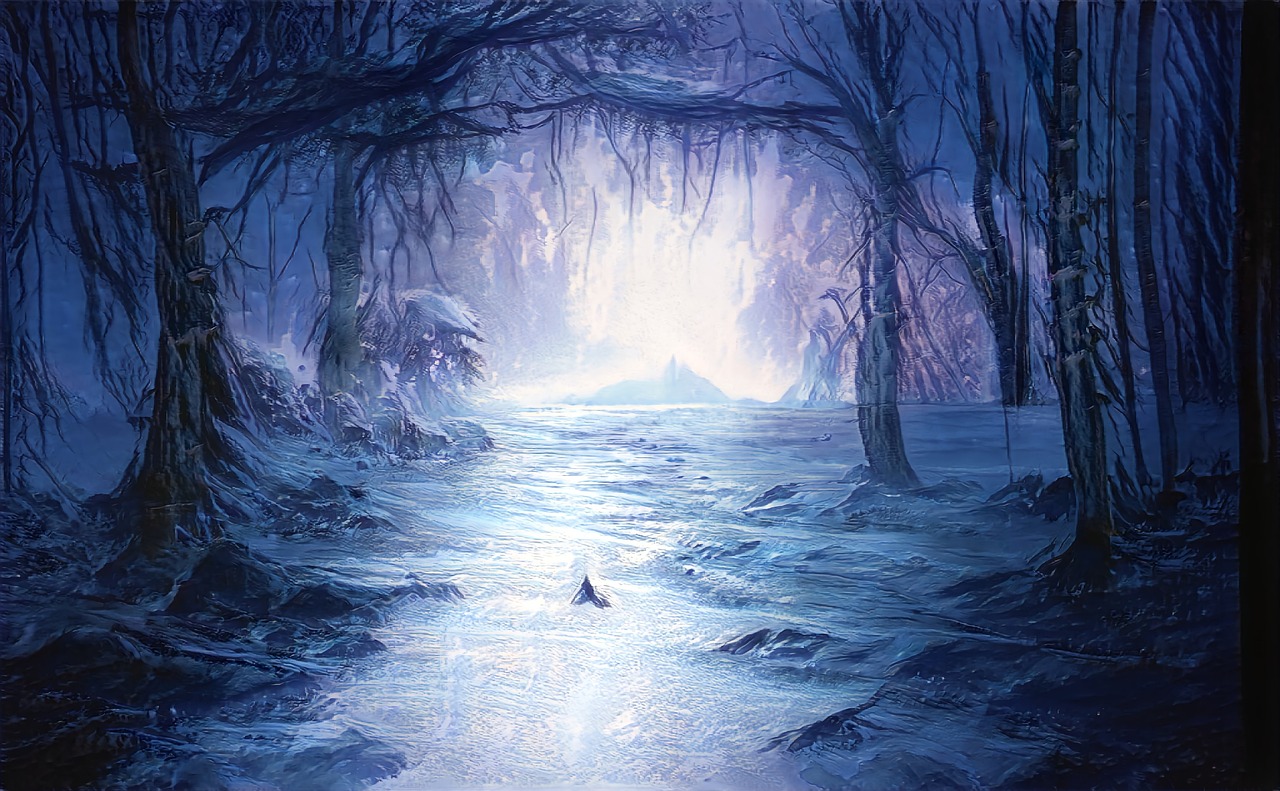
Building an Online Presence
In today's digital age, establishing a strong online presence is not just an option for artists; it's a necessity. Think of your online presence as your digital gallery, where potential fans and clients can explore your work from anywhere in the world. Just like a physical gallery, it should be inviting, engaging, and reflective of your unique artistic voice. But how do you create this virtual space that resonates with your audience? Here are some strategies to consider.
First and foremost, having a well-designed portfolio website is crucial. This is where you showcase your best work, share your artistic journey, and provide contact information. A professional-looking site can make a significant difference in how you are perceived. It’s essential to keep it updated with your latest projects and exhibitions. Consider incorporating a blog section where you can share insights about your creative process or discuss current trends in the art world. This not only positions you as an expert but also enhances your site's SEO, making it easier for new fans to discover you.
Another powerful tool for building your online presence is social media. Platforms like Instagram, Twitter, and Facebook allow you to connect with a wider audience and engage directly with your followers. Regularly posting high-quality images of your artwork, behind-the-scenes content, or even live-streaming your creative process can foster a deeper connection with your audience. Don’t forget to use relevant hashtags to increase the visibility of your posts, and engage with your followers by responding to comments and messages. This interaction can turn casual viewers into loyal fans.
Moreover, collaborating with other artists and influencers can provide a significant boost to your visibility. By working together on projects or participating in online challenges, you can tap into each other's audiences and expand your reach. It’s like a digital art fair, where everyone brings their unique flair to the table, and the collective energy can create a buzz that attracts more attention to your work.
Consider the following key elements when building your online presence:
- Consistency: Regularly update your portfolio and social media channels to keep your audience engaged.
- Authenticity: Share your genuine self and artistic journey; people connect with real stories.
- Networking: Engage with other artists and art lovers; building relationships can lead to exciting opportunities.
In conclusion, building an online presence is about creating a vibrant digital ecosystem where your art can thrive. By combining a professional portfolio, engaging social media strategies, and collaborative efforts, you can cultivate a rich online identity that not only showcases your artwork but also invites others into your creative world. Remember, the more you share and connect, the more opportunities will come your way!
Q1: How often should I update my portfolio?
A: It's best to update your portfolio regularly, ideally every few months, to reflect your latest work and artistic growth.
Q2: What social media platforms are best for artists?
A: Instagram is particularly popular among visual artists, but platforms like Pinterest and Facebook can also be effective for reaching different audiences.
Q3: How can I increase my followers on social media?
A: Consistent posting, engaging with your audience, using relevant hashtags, and collaborating with other artists can help increase your following.

Community Building and Collaboration
In the vibrant world of digital art, community building and collaboration are not just buzzwords; they are essential elements that fuel creativity and innovation. Imagine a bustling marketplace where artists from all walks of life gather, share ideas, and inspire one another. This is the essence of digital art communities. Social media platforms like Instagram, Twitter, and TikTok have become the modern-day canvases where artists showcase their work, connect with peers, and build supportive networks. But how exactly does this collaboration manifest, and why is it so crucial in the digital art landscape?
One of the most significant advantages of these online platforms is the ability to reach a global audience. Artists can share their creations instantly, receiving feedback and encouragement from fellow creators and art lovers alike. This interaction not only boosts confidence but also opens the door for potential collaborations. For instance, a digital painter might team up with a 3D modeler to create an immersive experience that combines both their talents, resulting in a project that neither could have achieved alone. It’s like a potluck dinner where everyone brings their unique dish, creating a feast of creativity!
Moreover, community engagement fosters a sense of belonging. Artists often face the challenge of isolation, especially when working on personal projects. Being part of a digital art community can alleviate this loneliness. Many platforms host challenges, contests, and collaborative projects that encourage artists to work together. For example, a group of digital illustrators might come together to create a themed anthology, each contributing their unique style to a collective narrative. This not only enhances their skills but also strengthens their bonds, creating a network of support that can last a lifetime.
In addition to personal growth, collaboration can lead to exciting opportunities. Many artists have found success through partnerships formed in online communities. These collaborations can take various forms, such as:
- Joint exhibitions showcasing the work of multiple artists.
- Interactive installations that require the expertise of different creators.
- Cross-promotional campaigns that help expand each artist's audience.
Furthermore, the rise of platforms like Discord and Slack has made it easier for artists to communicate and collaborate in real-time. These tools allow for the creation of dedicated channels where artists can brainstorm, share resources, and provide constructive criticism. The beauty of this setup is that it breaks down geographical barriers, enabling artists from different parts of the world to collaborate seamlessly. Imagine working with someone from a different country, sharing your unique perspectives and cultural influences, and creating something truly groundbreaking together!
However, it's essential to approach collaboration with an open mind and a willingness to learn. Not every partnership will be perfect, and navigating creative differences can be challenging. Yet, these experiences are often the most rewarding, as they teach valuable lessons about compromise, communication, and respect for each other's artistic vision. It's like dancing with a partner; sometimes you lead, sometimes you follow, but the end result can be a beautiful performance.
In conclusion, community building and collaboration in the digital art space are not just beneficial; they are vital for fostering creativity and pushing the boundaries of what art can be. By engaging with others, sharing knowledge, and working together, artists can elevate their craft and contribute to a rich tapestry of artistic expression that resonates with audiences worldwide.
1. How can I find a digital art community?
You can start by exploring social media platforms like Instagram, Twitter, and Facebook groups dedicated to digital art. Joining forums like DeviantArt or ArtStation can also help you connect with other artists.
2. What are the benefits of collaborating with other artists?
Collaborating with other artists can lead to new ideas, skill enhancement, and exposure to different artistic styles. It also provides networking opportunities that can help you grow your audience.
3. How can I effectively communicate with collaborators?
Using platforms like Discord or Slack for real-time communication can be very effective. Establishing clear goals and expectations before starting a project can also help streamline the collaboration process.
4. Are there any online events for digital artists?
Yes, many online platforms host events such as art challenges, webinars, and virtual exhibitions. Participating in these events can help you connect with other artists and gain exposure for your work.
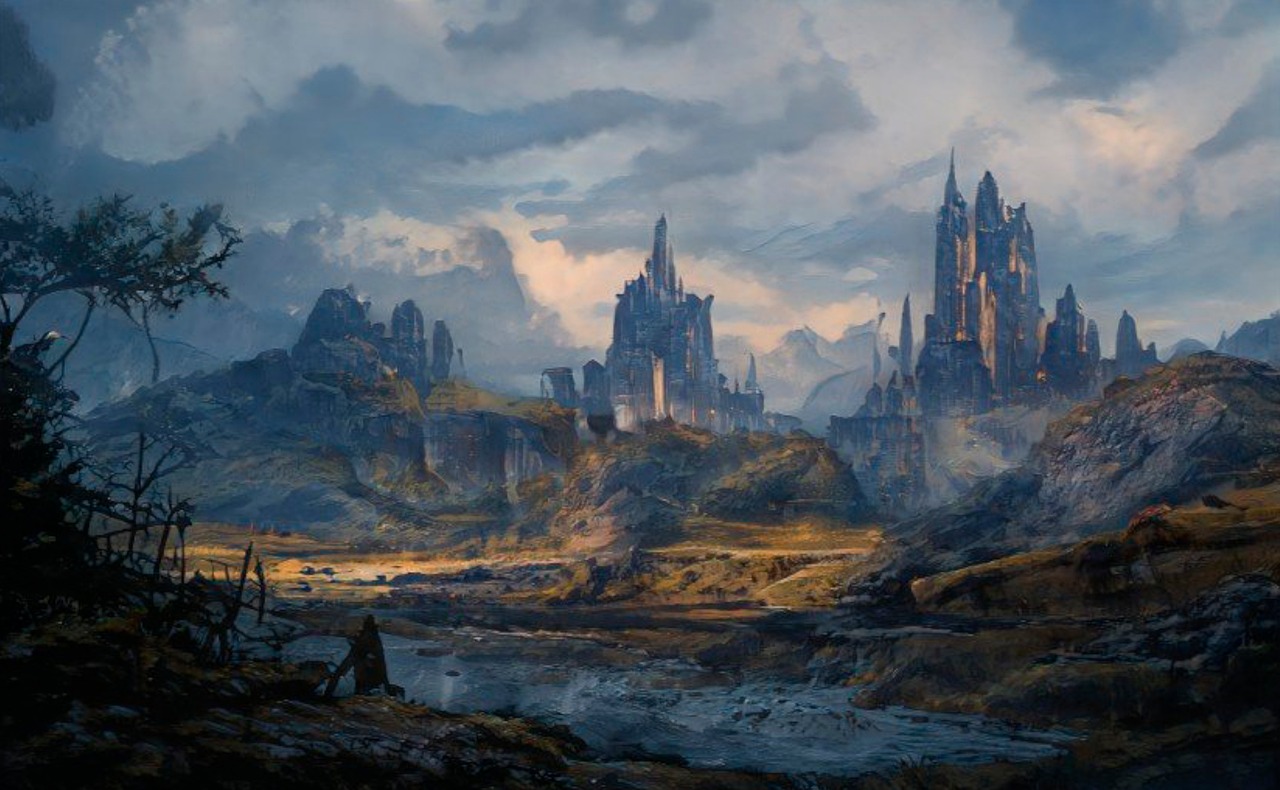
The Future of Digital Art
The future of digital art is an exhilarating frontier, brimming with possibilities that could redefine the very essence of creativity. As we stand on the cusp of technological advancements, it's impossible not to feel a sense of wonder about what lies ahead. Imagine a world where artistic expression is not confined to traditional mediums but is instead enhanced by the capabilities of artificial intelligence and virtual reality. These technologies are not just tools; they are catalysts for a new era of artistic exploration, enabling artists to create experiences that were once merely a figment of our imagination.
One of the most exciting prospects for the future of digital art is the integration of AI-driven creativity. Artists are beginning to collaborate with algorithms that can generate unique pieces of art based on inputs and preferences. This fusion of human creativity and machine learning opens up a realm of possibilities where the artist can explore new styles and techniques, pushing the boundaries of what we consider art. The dialogue between artist and machine may lead to pieces that challenge our perceptions and provoke deeper emotional responses.
Furthermore, the rise of augmented reality (AR) and virtual reality (VR) is set to transform how audiences experience art. Imagine walking through a gallery where the paintings come to life, or stepping into a digital landscape that immerses you in the artist's vision. These technologies allow for interactive installations that engage viewers in ways that traditional art forms cannot. The ability to manipulate and interact with art in a 3D space is not just a novelty; it’s a profound shift in how we connect with artistic expressions.
As digital art continues to evolve, we can expect to see an increase in collaborative projects that leverage the strengths of various artists and technologists. The art community will likely become more interconnected, with artists from diverse backgrounds joining forces to create groundbreaking works. This collaboration can lead to innovative projects that blend different disciplines, fostering a richer cultural dialogue and expanding the definition of what art can be.
In addition, the impact of social media on the future of digital art cannot be understated. Platforms such as Instagram, TikTok, and Pinterest are not just venues for sharing art; they are powerful tools for shaping trends and influencing public perception. Artists who harness these platforms effectively can build substantial followings, engage with their audiences directly, and even influence the art market. The democratization of art promotion means that emerging artists have a better chance of being discovered, regardless of their geographical location.
However, with these advancements come challenges, particularly concerning intellectual property and the authenticity of art. As digital artworks become easier to replicate and distribute, issues surrounding ownership and copyright will need to be addressed. Artists will need to navigate these complexities to protect their work while still embracing the opportunities that digital platforms provide.
In conclusion, the future of digital art is not just about technological advancements; it's about how these innovations will reshape our understanding of creativity and connection. As we embrace new tools and mediums, we must also reflect on the implications of these changes. The journey ahead is sure to be filled with surprises and explosions of creativity that will challenge our perceptions and inspire future generations of artists.
- What role will AI play in the future of digital art? AI will likely serve as a collaborative partner for artists, helping to generate new ideas and styles while allowing for unique artistic expressions.
- How will augmented and virtual reality change the way we experience art? AR and VR will create immersive environments that allow viewers to interact with art in ways that traditional galleries cannot offer.
- What are the potential challenges artists may face in the digital landscape? Artists will need to navigate issues related to copyright, authenticity, and the commercialization of their work in an increasingly digital world.
- How can social media impact an artist's career? Social media provides artists with platforms to showcase their work, connect with audiences, and promote their art, leading to greater visibility and opportunities.
Frequently Asked Questions
- What is digital art?
Digital art refers to artistic works that are created or presented using digital technology. This can include everything from digital paintings and illustrations to 3D models and animations. It’s a broad field that combines traditional art techniques with modern technology.
- How has digital art evolved over the years?
The evolution of digital art has been remarkable, starting from simple computer-generated images to complex virtual reality experiences. Key advancements in technology, such as the introduction of graphic tablets, software like Adobe Photoshop, and 3D modeling tools, have significantly shaped its development and accessibility.
- What technologies are influencing digital art creation?
Emerging technologies like virtual reality (VR), augmented reality (AR), and artificial intelligence (AI) are transforming how artists create and experience art. These tools allow artists to push boundaries, explore new mediums, and create immersive experiences that engage viewers in unique ways.
- What software should I use as a digital artist?
There are several popular software options for digital artists, including Adobe Photoshop and Illustrator for graphic design, and Blender and Maya for 3D modeling and animation. Each tool offers unique features that can enhance your creative process, depending on the type of art you want to create.
- What are the current trends in digital art?
Current trends in digital art include the rise of NFT art, interactive installations, and the use of social media for promotion. These trends are reshaping the art market and creating new opportunities for artists to connect with audiences and sell their work.
- How can social media help artists promote their work?
Social media platforms provide artists with an incredible opportunity to reach a wider audience. By sharing their work, engaging with fans, and building an online presence, artists can effectively promote their art and connect with potential buyers and collaborators.
- What strategies can I use to build my online presence as an artist?
To build your online presence, focus on creating a professional portfolio, regularly sharing content, and engaging with your audience. Consistency is key, so try to post regularly and interact with your followers to foster a loyal community around your art.
- Why is community important in the digital art space?
Community plays a crucial role in the digital art space as it fosters collaboration, support, and inspiration among artists. By connecting with others, artists can share ideas, receive feedback, and find opportunities for joint projects, which can enhance their creative journey.
- What does the future hold for digital art?
The future of digital art looks promising, with potential advancements in AI and further integration into mainstream culture. As technology continues to evolve, we can expect new forms of artistic expression and innovative ways for artists to engage with audiences.




